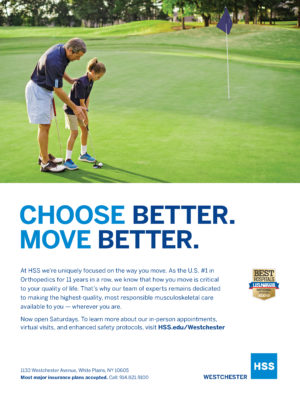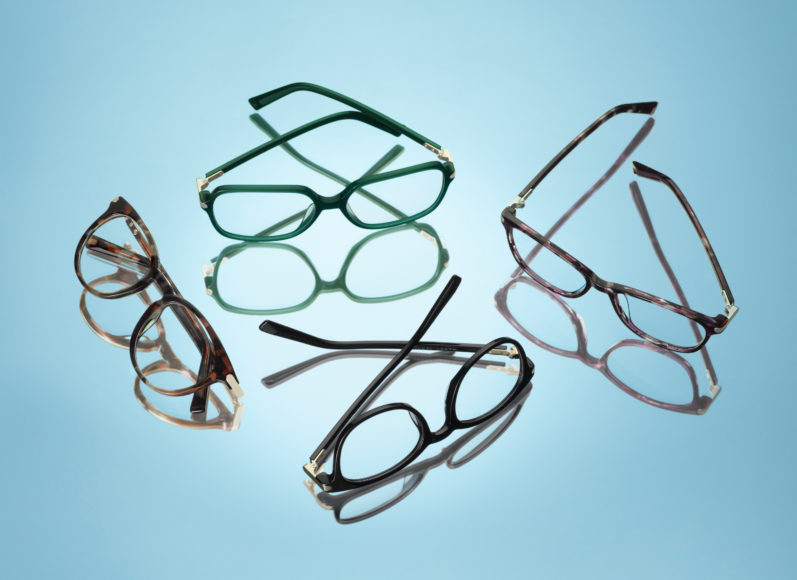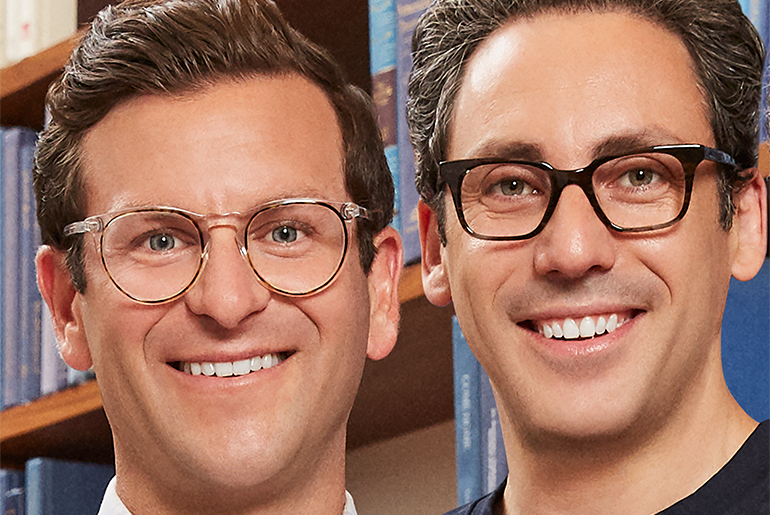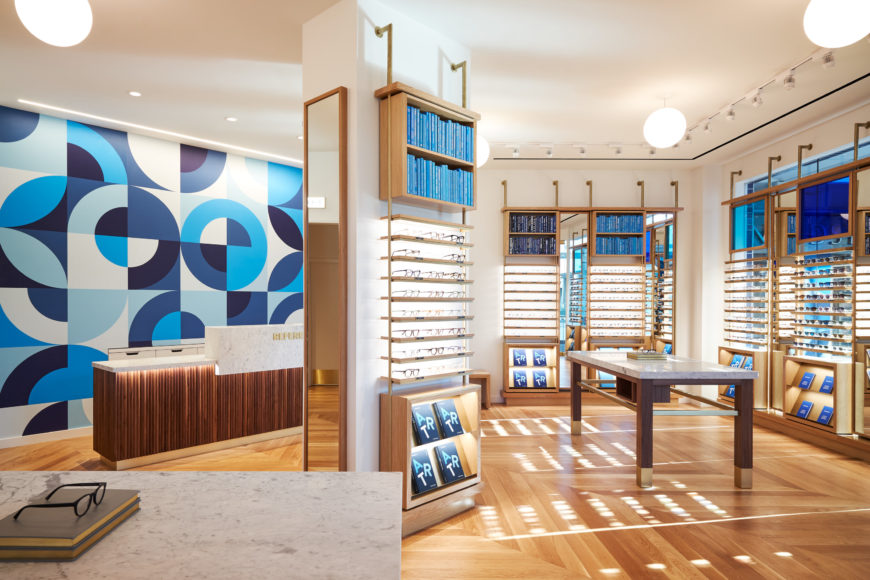The key to Warby Parker is a holistic, affordable approach to eye care that has made the company a reported $3 billion business with nearly 3,000 employees at more than 130 stores.
The latest is the 1,691-square-foot store at The Westchester in White Plains, the first in the county. (It joins 12 in the metro area, including one in Greenwich and one in South Norwalk, along with an optical lab in Sloatsburg.) Besides eyeglasses, contacts, sunglasses, readers and accessories that start at $95, the store includes matching blue books that represent the company’s commitment to artists and writers in its communities. An exam room wall, covered in figures of people reading books in yogic positions, reminds visitors why eye health is so important.
And because eyesight is so crucial, Warby Parker has distributed more than eight million pairs of eyeglasses through its Buy a Pair, Give a Pair (BAP GAP) program to date. (During the pandemic, Warby Parker has continued to fund glasses distribution as it can while helping VisionSpring, its primary nonprofit partner, provide personal protective equipment to locations at home and abroad.)
It’s an unusual business with an unusual backstory that is summarized in 100 words on its tote bags. It begins in 2008 with four friends at The Wharton School of the University of Pennsylvania — Neil Blumenthal, who had worked for VisionSpring; Dave Gilboa, who started out at the management consultant firm Bain & Co.; Andrew Hunt and Jeff Raider — and a pair of glasses lost on a backpacking trip (Gilboa’s). The cost of replacing them was so high that Gilboa squinted through the first semester at Wharton. The others soon had similar replacement stories. Why were attractive glasses so expensive?
In a word — monopoly, no, not the board game but rather the real-life game of controlling the market. Enter Luxottica, the Italian conglomerate that dominates every aspect of the industry. With so much power — it merged with France’s Essilor in 2017 — EssilorLuxoticca can afford to set prices for every brand from Chanel to Ray-Ban.

But the Wharton four had a vision of countermanding that with a plan for affordable glasses you could buy online. Convincing others wasn’t easy. Even their professor Adam Grant was skeptical. According to CNBC’s “The Brave Ones,” the quartet’s 40-page proposal never got passed the semifinals of Wharton’s Business Plan Competition.
Still, the four persisted, taking a class in health care entrepreneurship, haunting eyeglass stores, doing market research among Starbucks customers and pouring their combined life savings of $120,000 to build a website and inventory. After running through 2,000 names, Gilboa plucked the brand’s moniker from two he found in a Jack Kerouac Archive exhibit at the New York Public Library.
The four also hired a fashion publicist to get them into the right publications. Evidently, the publicist did too good a job: Within 48 hours of the 2010 online launch, the brand was out of inventory — all this while the founders were still Wharton students.
Consumers started clamoring for a store so Blumenthal’s Philadelphia apartment served as the showroom with co-CEO Gilboa’s laptop as the cash register. (Hunt and Raider have gone on to other ventures but remain on the board.)
When Warby Parker opened its headquarters in New York City, it included a showroom. But it still didn’t have a store. Between 2011 and 2012, the company experimented with several pop-up ideas, including converting a vacant garage into the Warby Parker Holiday Spectacle Bazaar and turning a yellow school bus into a mobile showroom for the Warby Parker Class Trip, which visited more than 15 cities and allowed the brand to gather information for its retail strategy. That led to the opening of the first Warby Parker store in SoHo in 2013.
Clearly, Warby Parker has made converts of skeptics like Grant. Not only did he become an investor; he wrote a book inspired by his experience teaching the Warby Parker fab four with the appropriate title “Originals: How Non-Conformists Move the World.”
For more, visit warbyparker.com.







